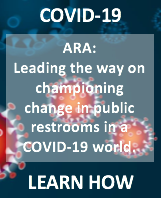ADA Accessibility Guidelines
Public Restrooms and the Americans with Disabilities Act (ADA)
Overview
The Department of Justice ADA Title III Regulation 28 CFR Part 36 Standards for Accessible Design mandates guidelines for accessibility to places of public accommodation and commercial facilities by individuals with disabilities. These guidelines are applied during the design, construction, and alteration of such buildings and facilities. These requirements are specified in detail in the ADA Accessibility Guidelines for Buildings and Facilities (ADAAG).
Problems with the ADAGG
- A complaint that a free standing public restroom is not compliant with the ADAAG requirements may be satisfied by closing the facility. Most likely the person filing the complaint is not help by such an outcome.
- Lack of recognition that being “restroom challenged” is a disability. For example the restroom challenged hesitate or are unable to utilize mass transit systems without toilet facilities. Arguing all riders are equally denied use of facilities ignores that only the restroom challenged are hurt but this policy.
Recommendations
Take the necessary legal or legislative lobbying action to force the Department of just to address this issue.
Other Concerns - Vision Impaired
Braille inscriptions enable vision-impaired people to locate public toilets and the various fixtures with the facilities.
Contact Us
American Restroom Association, Inc.
P.O. Box 21237
Catonsville, MD 21228

MEDIA: Let us connect you with the best expert to support your news and media projects.
INVENTORS, MANUFACTURERS, SUPPLIERS, & SERVICE PROVIDERS: We want to hear your stories about how you are leading change in restroom design and maintenance!


